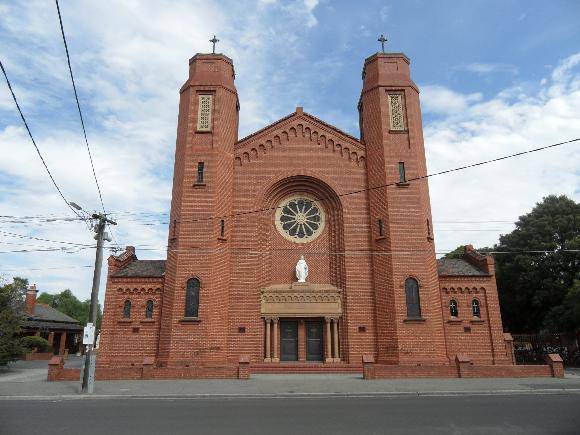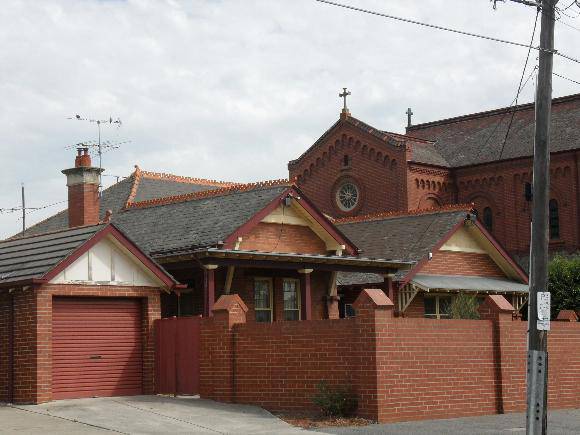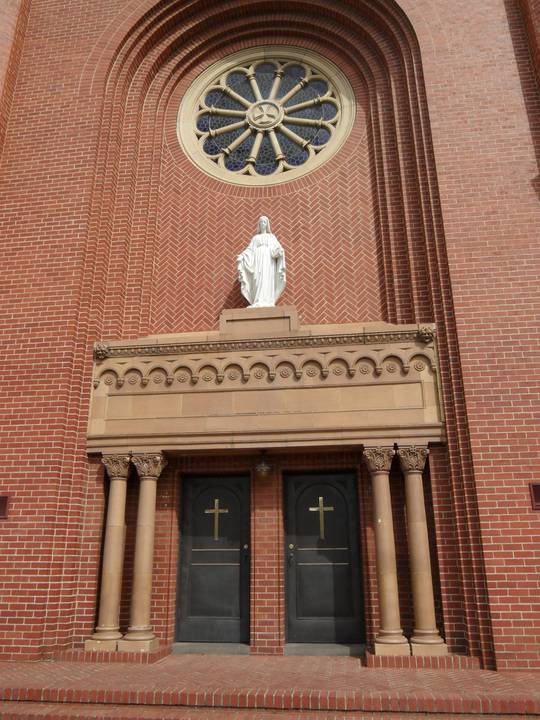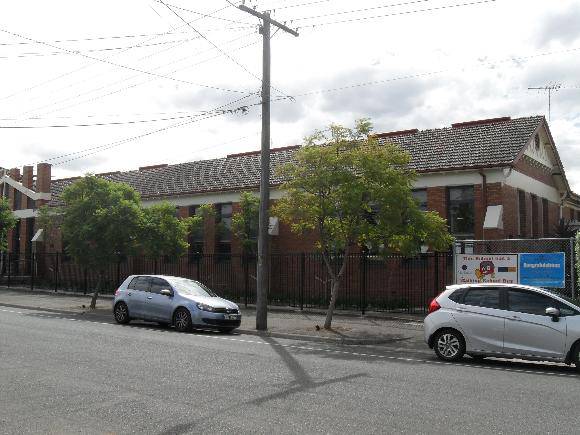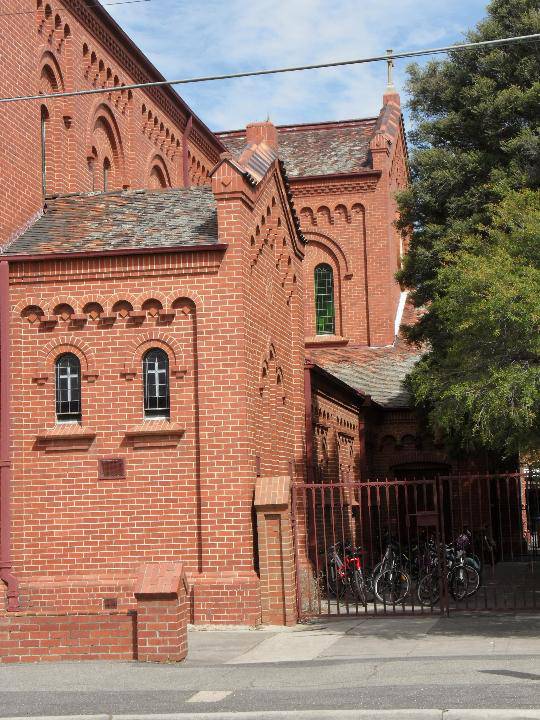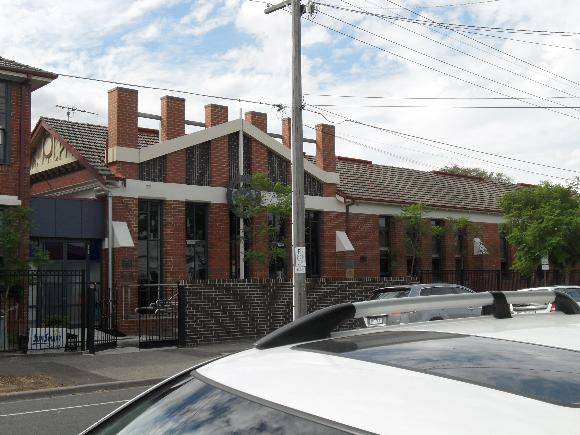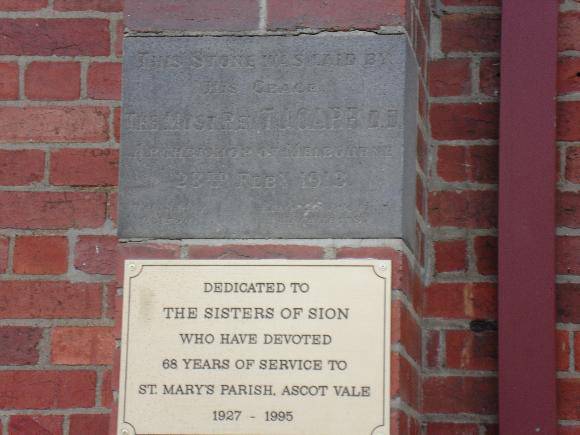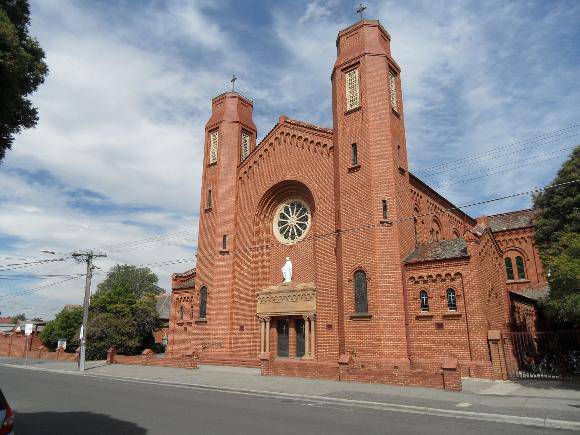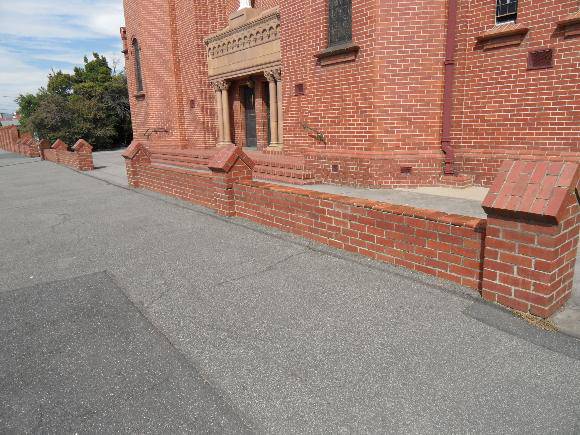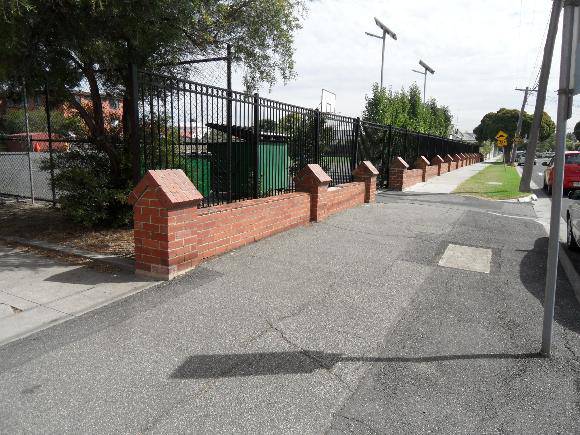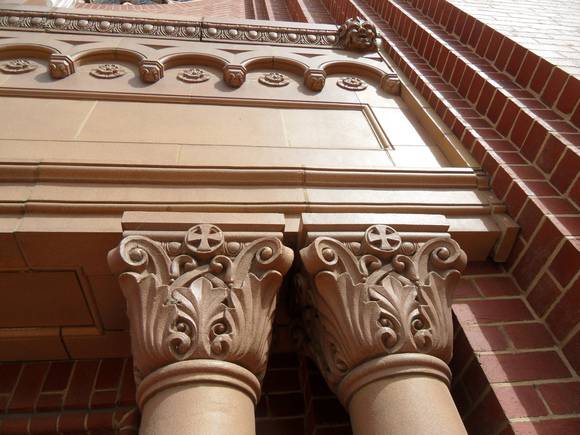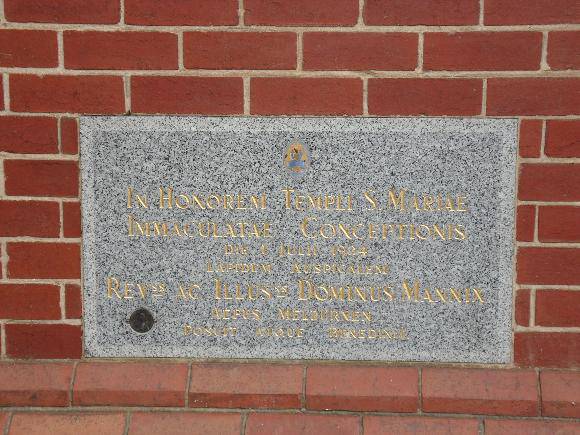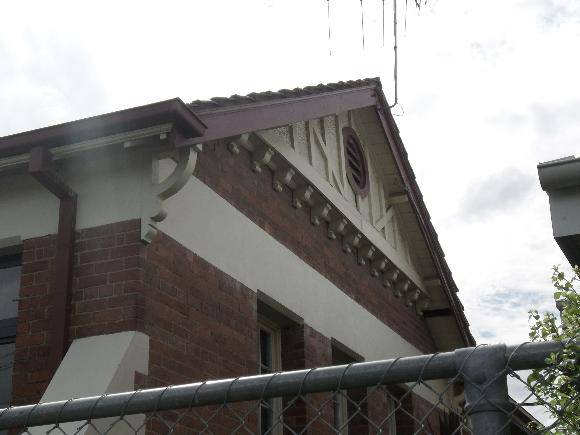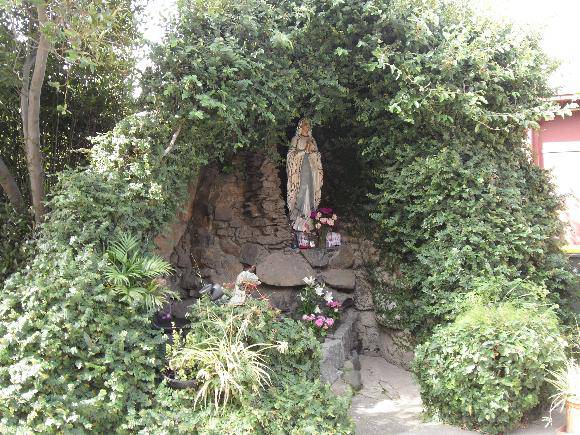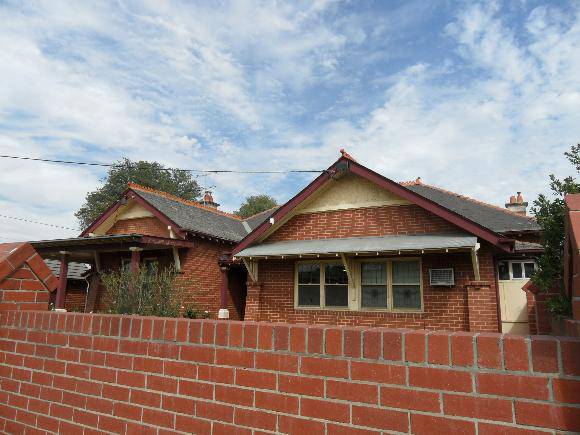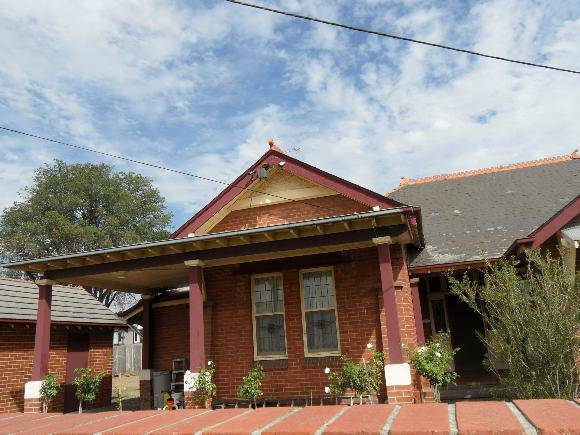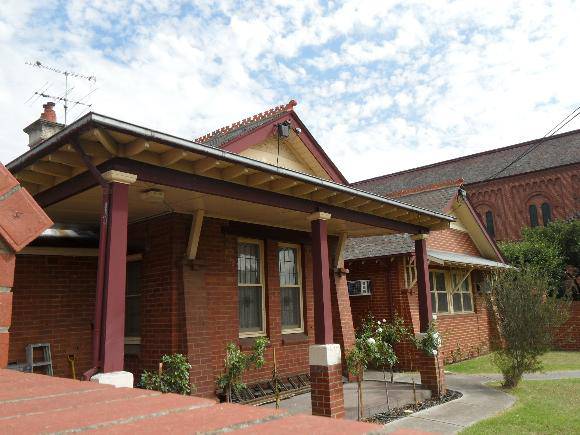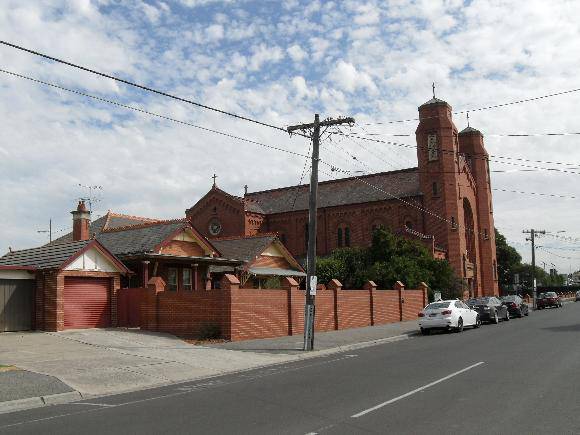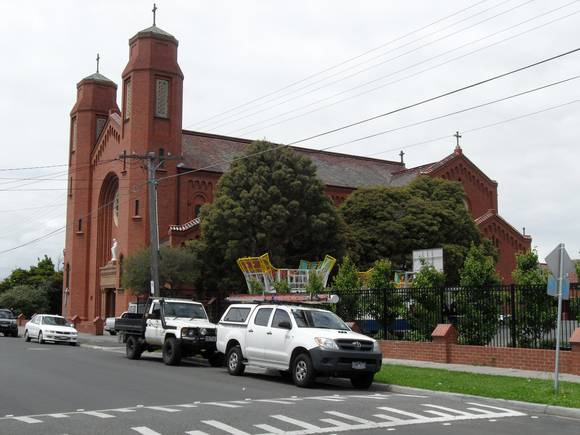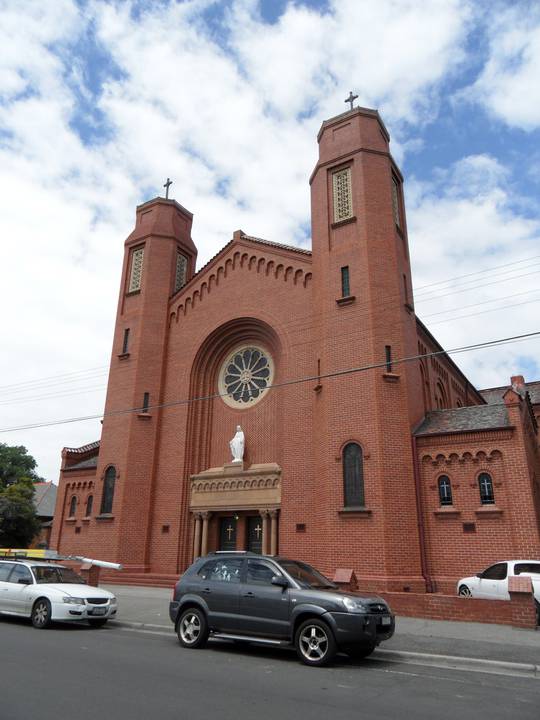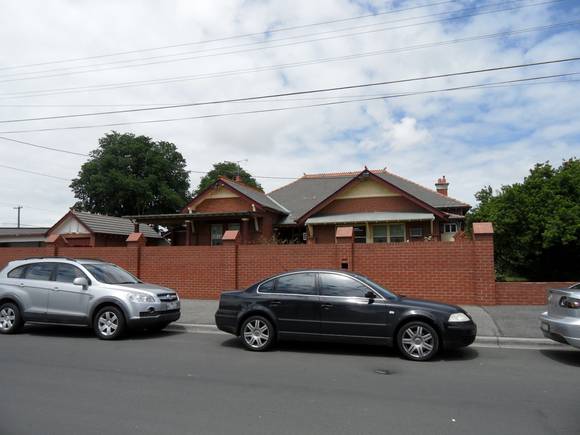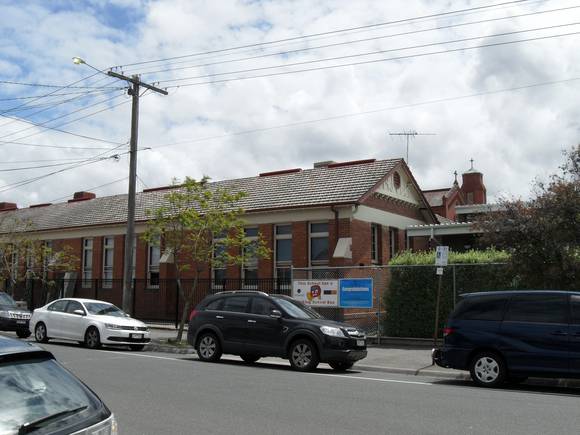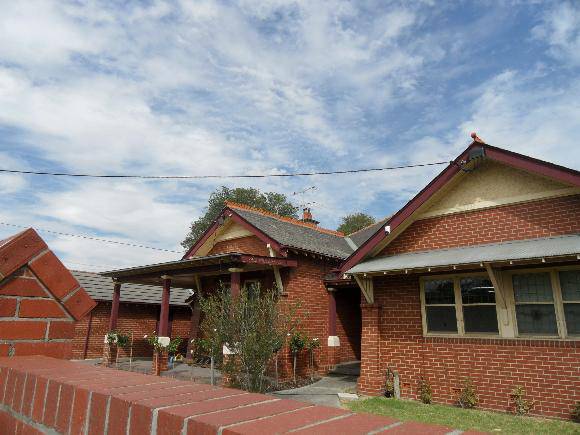| Back to search results » | Back to search page » |
|
ST MARY OF THE IMMACULATE CONCEPTION CHURCH, PRESBYTERY & SCHOOL
Statement of Significance
What is significant? Later additions and alterations to the Church, Presbytery and School
building are not significant. The later (post-war) school buildings on
the site are not significant either.
How is it significant?
Why is it significant? The Church is architecturally significant as a monumental and highly
intact example of the Romanesque Revival applied in a relatively
academic manner. It is distinguished by its high-quality materials and
details, including the red brick walls with arcaded corbel tables and
a decorative houndstooth pattern in the double-height archivolt above
the entrance and in inset panels, and sandstone-coloured faience used
for the entrance portico and tower screens. (Criteria D & E) The grotto on the east side of the Church is aesthetically
significant as a survivor of the beautification works put in place by
Fr Bakker to provide an appropriate setting to the grand church.
(Criterion E) It has associative significance for the long association with
architect William Patrick Connolly of practice Kempson & Connolly,
who was the preferred parish designer under Father A May (1912-19).
Connolly's designs during this time included an enlargement and
remodelling of the 1895 timber church an existing house for the
presbytery (both since replaced), the 1913 school on Roseberry Street,
and the current 1916 Presbytery. Connolly, both in practice with CG
Kempson and in private practice, was a prolific designer for the
Catholic Church from the 1890s to the 1920s. It also has associative significance as the life's work of Father H
Bakker whose was the driving force behind the monumental Romanesque
Revival church of 1934 & 1938 and associated beautification of the
grounds, including grottos, statues and shrines. Fr Bakker made two
study trips to Europe to get ideas for the new church, and then worked
closely with his chosen architect, Patrick J O'Connor (another
prolific designer for the Catholic Church), to bring his vision to
fruition. (Criterion H) It is socially significant as the centre of Catholic worship in Ascot
Vale since 1895. (Criterion G)
St Mary of the Immaculate Conception Church and its landscaping
including the grotto, Presbytery and School at 123-125 St Leonards
Road and 80 Roseberry Street, Ascot Vale, are significant. The
monumental brick Church was built in two stages, in 1934 and 1938, to
a Romanesque design by architect Patrick J O'Connor. Landscape
elements around it, such as the grotto on its east side, were planned
by Parish Priest Father Bakker to complement the new Church. The low
brick fence along the north boundary also dates from the 1930s. The
Presbytery was built in 1916 to a Federation Bungalow design by
architect Patrick Connolly of Kempson and Connolly. Connolly was also
the designer of the oldest building on the site: the 1913 School (and
extended in kind in 1924) on Roseberry Street.
The St Mary's complex is of local historical,
architectural/aesthetic, social and associative significance to the
City of Moonee Valley.
It is historically significant as a tangible illustration of the
beginnings of the Ascot Vale Catholic Parish, founded in 1912, as
evidenced by the survival of one of the original buildings: the School
of 1913. It is also significant as an ambitious example of the
Catholic Church's conscious decision to accelerate building programs
during the 1930s depression as a form of social support by providing
employment and business for many local tradesmen and suppliers.
(Criterion A)
Group
Education
Category
School - Private


